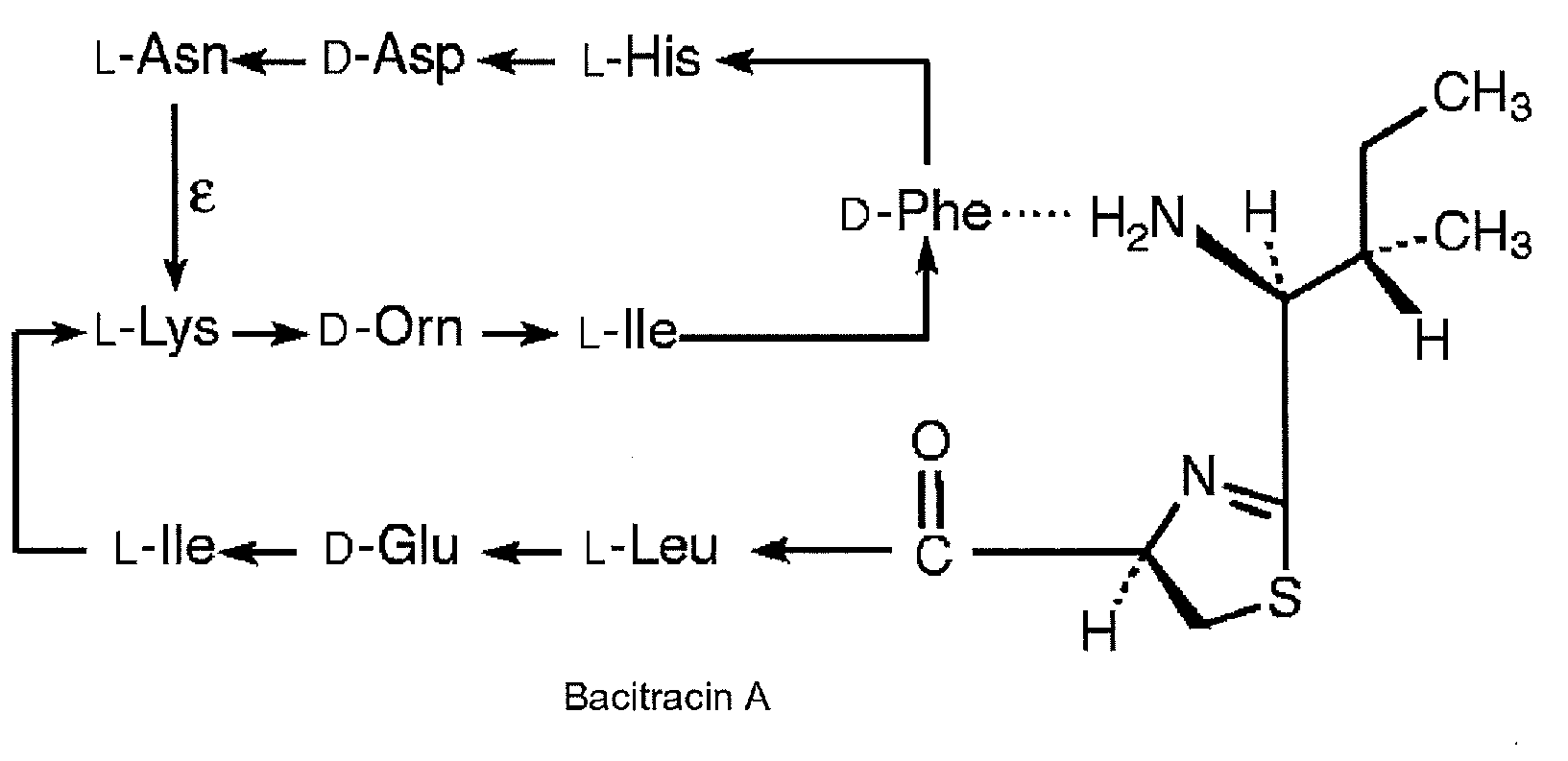Bacitracin metal complexes used as bleach catalysts
a technology of bacitracin and metal complexes, which is applied in the field of bacitracinmetal complexes, can solve the problems of unfavorable bleaching performance, shift of ph, and premature hydrolysis, and achieve the effect of gentle on the color of textile fabrics and effective cleaning of textile fabrics
- Summary
- Abstract
- Description
- Claims
- Application Information
AI Technical Summary
Benefits of technology
Problems solved by technology
Method used
Image
Examples
example 1
Production of Bacitracin-Metal Complex and its Bleaching Action on Tea
[0097](a) Production of the tea solution: One liter of boiling distilled water was poured onto 1.6 g of black, unperfumed tea and left to brew for 5 minutes. The insoluble components were then filtered out through a fluted filter, and after cooling to room temperature, the pH value was adjusted to 10.0 with sodium hydroxide solution. The solution thus prepared may be used for a period of 1-2 days.
[0098](b) Production of the bacitracin-metal complexes: 0.025 mmol (relative to the metal atom) of the metal salt to be investigated was stirred with 0.050 mmol of bacitracin for up to 24 hours at room temperature in an open vessel in 25 ml of deionized water. The pH was adjusted to 10 and the mixture left to stand for 48 hours at room temperature, after which the insoluble components were removed by sterile filtration through a syringe filter. A metal-free solution of bacitracin was prepared in exactly the same way, but ...
PUM
| Property | Measurement | Unit |
|---|---|---|
| pH | aaaaa | aaaaa |
| temperatures | aaaaa | aaaaa |
| wt. % | aaaaa | aaaaa |
Abstract
Description
Claims
Application Information
 Login to View More
Login to View More - R&D
- Intellectual Property
- Life Sciences
- Materials
- Tech Scout
- Unparalleled Data Quality
- Higher Quality Content
- 60% Fewer Hallucinations
Browse by: Latest US Patents, China's latest patents, Technical Efficacy Thesaurus, Application Domain, Technology Topic, Popular Technical Reports.
© 2025 PatSnap. All rights reserved.Legal|Privacy policy|Modern Slavery Act Transparency Statement|Sitemap|About US| Contact US: help@patsnap.com



